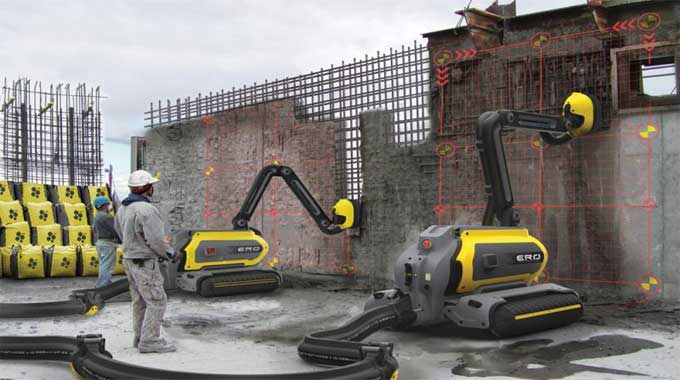
The Future of Construction with Automation

The industry is heading toward autonomous machines that will move the earth and build roads. Several AEC professionals believe autonomous machines will represent a significant opportunity that will take time to develop. Many may worry about lost jobs or job site accidents with driverless construction equipment.
The Concept of Automation
Automation has been a trend among earthmoving manufacturers for years. In other words, the path to automation has been paved at industrial sites. Several large firms have moved from putting posts in the ground by hand to controlling the blades automatically with 3D machine control.
The intelligence of a skilled operator is still necessary to employ semi-automatic machines, even though they improve productivity. Today's technology allows experienced operators to run 41 percent faster and 75 percent more accurately than new operators, who run 28 percent faster.
Steering and other machine tasks are becoming more automated. So contractors can expect improved efficiency. The key categories of autonomous equipment are compactors, dozers, and excavators.
Uses of Construction Industry
1. Masonry Construction
Automation plays a significant role in the prefabrication of masonry blocks. Not only do they improve productivity, but they also reduce labor costs. It is possible to produce prefabricated blocks by hand or with semi-automated plants.
It is not easy to install prefabricated bricks and masonry blocks. A plant of this type needs a huge amount of money to install, which can prove a substantial obstacle.
2. Timber Construction
From a manual process to a fully automated, numerically controlled one, wood processing has changed dramatically. Prefabricated house components are manufactured in automated plants with very little hand labor involved.
3. Steel Components Production
For steel companies, automation has largely been used to prefabricate building components based on contractor orders. Erection of the steel components will take place on the construction site. It is mostly manual welding and screwing that is used for erection, not much automation.
4. Precast Concrete Industry
Construction materials, such as cement, steel, glass, aluminum, and wood, have been almost fully automated for a long time. The construction of roads, tunnels, and earthworks is largely automated.
Precast concrete Components are made with large degrees of automation, and the number of Components required for the project is determined based on the buyer's specifications. Precast Components can automate because they provide products whose quality does not change while factory waste decreases.
A computer-aided planning and programming system makes it possible to utilize the right amount of materials as well as decrease the amount of factory waste. Stationary mixer plants have very much automation for quite some time.
Labor Shortages
Heavy equipment operators are in short supply around the world. Autonomous construction equipment is primarily driven by increased global infrastructure spending.
It is difficult to complete our tasks given our expanding infrastructure and growing energy needs. Developing countries will have a greater need for work.
The difficulty of finding labor in developing countries will increase if big construction firm cannot find employees in developed nations. In remote areas, repetitive tasks, and regions with a labor shortage, autonomous construction equipment could be part of the solution, says Architect.
Benefits
A contractor wants a solution that provides an ecosystem. The interaction of one machine with another is an area where a lot of big, reputable construction firms will focus.
Imagine a scenario where two compactors and a dozer work together, and the compactor instruct by automation where to move next. There's a lot to it. Provide improvements to planning, bidding, and real-time decision-making while determining what machines are needed.
As automated machines took care of more mundane duties, operators could focus on more value-added jobs. Additionally, more automation might reduce fatigue and stress among human operators, which would result in improved safety. In an alternative to traveling for weeks on end, an operator might manage equipment remotely instead of traveling.
To learn more, watch the following video tutorial.
Video Source: FBR
Conclusion:
Using an autonomous machine requires it to work with all the other machines, assets, and workers on the job site. There is no imminent possibility that a job site will be devoid of workers.
Construction sites are more complex than driving from A to B in cars or trucks. Autonomous machines will have a role to play in the process, but it will take time. Find out what your business can expect from this trend and ease your fears.


